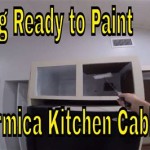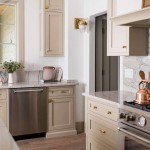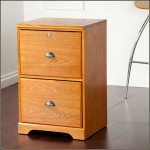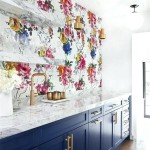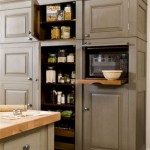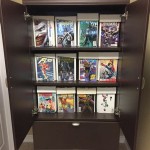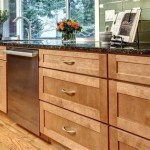Kitchen Cabinet Drawer Hardware Replacement: A Comprehensive Guide
Kitchen cabinet drawer hardware, often overlooked, plays a significant role in the functionality and aesthetic appeal of a kitchen. Over time, handles, pulls, knobs, and drawer slides can become worn, broken, or simply outdated, necessitating replacement. This article provides a comprehensive guide to kitchen cabinet drawer hardware replacement, covering everything from identifying the types of hardware to installation procedures.
Identifying Drawer Hardware Types
Before embarking on a drawer hardware replacement project, it's crucial to understand the different types of hardware available. The selection should align with the desired style, functionality, and existing cabinet design.
Drawer Pulls: These are typically elongated handles attached to the drawer front with two or more screws. Pulls offer a comfortable grip and are available in various styles, from sleek and modern to ornate and traditional. Popular materials include stainless steel, brass, bronze, and even acrylic.
Drawer Knobs: Knobs are smaller, single-point attachment hardware options. They are often round, square, or uniquely shaped and are generally less expensive than pulls. Knobs are suitable for smaller drawers or when a minimalist aesthetic is preferred. Material choices mirror those of pulls, offering a wide range of design possibilities.
Drawer Slides: These mechanisms allow the drawer to smoothly and quietly open and close. There are several types of drawer slides, each with distinct features and load capacities.
Ball-Bearing Slides: These slides use ball bearings to facilitate smooth movement. They are known for their durability, high load capacity, and typically full-extension capability, meaning the drawer can be pulled out completely. Ball-bearing slides are often found in high-end kitchens due to their superior performance.
Roller Slides: Roller slides utilize nylon rollers to support the drawer. They are a more economical option compared to ball-bearing slides. However, they generally have a lower load capacity and may not offer full extension. Roller slides are suitable for lighter-duty drawers and budget-conscious projects.
Soft-Close Slides: Regardless of whether they use ball bearings or rollers, soft-close slides incorporate a mechanism that gently and quietly closes the drawer. This feature prevents slamming and extends the life of the drawer and cabinet components. Soft-close functionality is a desirable upgrade that enhances the overall kitchen experience.
Self-Close Slides: These slides use a spring mechanism to pull the drawer closed during the last few inches of travel. Though they prevent the drawer from being left ajar, they lack the gentle closing action of soft-close slides.
Touch-to-Open Slides: These modern slides allow the drawer to open with a gentle push. They eliminate the need for pulls or knobs, creating a sleek, handle-less aesthetic. Touch-to-open slides often require additional mechanisms and careful installation for proper functionality.
Essential Tools and Materials
Successful drawer hardware replacement requires the right tools and materials. Having these items readily available before starting the project will streamline the process and prevent unnecessary delays.
Screwdriver Set: A variety of screwdriver sizes and types (Phillips head and flat head) is essential for removing old hardware and installing new hardware. A power screwdriver with adjustable torque settings can speed up the process, but caution should be exercised to avoid stripping screw heads.
Drill: A drill with various drill bits is necessary for creating new pilot holes if the existing hardware has different hole spacing or if new hardware requires additional anchoring. Choose drill bit sizes that match the screw size being used to prevent splitting the wood.
Measuring Tape: Accurate measurements are crucial for ensuring the new hardware fits correctly and is properly aligned. Pay close attention to center-to-center measurements for pulls and the length and width of drawer slides.
Pencil: A pencil is used to mark installation points for new hardware. Precise marking ensures consistent and professional-looking results.
Level: A level is essential for ensuring that pulls and knobs are installed straight. A small bubble level is typically sufficient for this task.
Safety Glasses: Eye protection is paramount when working with power tools and hardware. Safety glasses protect against flying debris and potential eye injuries.
Wood Filler: Wood filler is used to fill any existing holes that are not being utilized by the new hardware. This provides a clean surface for the new hardware and prevents gaps or weaknesses.
Sandpaper: Sandpaper is used to smooth out wood filler after it has dried. Various grits may be necessary, starting with a coarser grit to remove excess filler and ending with a finer grit for a smooth finish.
Touch-Up Paint or Stain: Touch-up paint or stain is used to blend the filled holes with the existing cabinet finish. Careful color matching is essential for a seamless repair.
New Hardware: The most obvious material is the replacement hardware itself. Ensure the selected hardware is compatible with the existing drawer and cabinet design, and that the quantity is sufficient for all drawers.
Step-by-Step Installation Guide
The installation process varies slightly depending on the type of hardware being replaced. The following provides a general guide applicable to most drawer hardware replacement projects.
Step 1: Remove the Old Hardware: Using a screwdriver, remove the existing pulls, knobs, and drawer slides. For drawer slides, identify the release mechanism (usually a lever or clip) and disengage it to separate the drawer from the cabinet portion of the slide.
Step 2: Clean and Prepare the Surface: Clean the drawer fronts and cabinet surfaces with a mild cleaner to remove any dirt, grease, or grime. Inspect the surfaces for damage or imperfections. If necessary, fill any unwanted holes with wood filler and allow it to dry completely.
Step 3: Sand and Touch Up (if necessary): Once the wood filler is dry, sand it smooth using progressively finer grits of sandpaper. Clean the sanded area and apply touch-up paint or stain to match the existing cabinet finish. Allow the paint or stain to dry completely.
Step 4: Measure and Mark: Use a measuring tape to determine the correct placement for the new hardware. For pulls, measure the center-to-center distance between the mounting holes. Mark the screw locations on the drawer front using a pencil. Ensure the markings are level and consistent across all drawers.
Step 5: Drill Pilot Holes (if necessary): If the new hardware requires different screw locations or if the existing holes are not suitable, drill pilot holes at the marked locations. Use a drill bit that is slightly smaller than the screw size to prevent splitting the wood.
Step 6: Install the New Hardware: Attach the new pulls or knobs to the drawer front using the supplied screws. Tighten the screws securely, but avoid over-tightening, which can damage the hardware or the drawer front. For drawer slides, attach the cabinet portion of the slide to the cabinet frame first, ensuring it is level and properly aligned. Then, attach the drawer portion of the slide to the drawer box. Finally, slide the drawer into the cabinet, engaging the slide mechanisms.
Step 7: Test and Adjust: Once the hardware is installed, test the functionality of the drawers. Ensure they open and close smoothly and that the pulls or knobs are securely attached. If necessary, adjust the drawer slides to improve alignment or closing action. Some drawer slides have adjustable mounting brackets to fine-tune the drawer position.
Considerations for Specific Hardware Types
While the general installation steps remain consistent, certain hardware types may require specific considerations to ensure proper installation and optimal performance.
Soft-Close Drawer Slides: Soft-close slides often require precise alignment to function correctly. Pay close attention to the manufacturer's instructions regarding mounting clearances and adjustment procedures. Insufficient clearance can prevent the soft-close mechanism from engaging properly, resulting in a drawer that slams shut.
European-Style Hinges and Slides: European-style hinges and slides, also known as concealed hinges and slides, require specialized tools and techniques for installation. These systems typically involve mounting plates and adjustable mechanisms that allow for precise door and drawer alignment. If you are unfamiliar with these types of hardware, it is advisable to consult a professional installer.
Touch-to-Open Mechanisms: Touch-to-open mechanisms often require a power source and careful wiring. It is essential to follow the manufacturer's instructions precisely to ensure safe and reliable operation. Consider consulting a qualified electrician if you are unsure about the electrical aspects of the installation.
Long Pulls: When installing long pulls, ensure that the drawer front is strong enough to support the weight and leverage of the pull. Reinforce the drawer front with a backing plate or additional bracing if necessary to prevent it from warping or cracking over time.
By understanding the different types of drawer hardware, utilizing the appropriate tools and materials, and following the step-by-step installation guide, homeowners can successfully replace their kitchen cabinet drawer hardware and enhance the functionality and aesthetics of their kitchen.

How To Replace Kitchen Cabinet Hardware Yourself

Replacing Drawer Slides Extreme How To

A Guide To Updating Your Kitchen Cabinet Hardware Bella Tucker

How To Replace Kitchen Drawers Shelfgenie

How To Replace Kitchen Drawers Shelfgenie
:strip_icc()/102326027-c240150e2d95420a85bc45f473f98644.jpg?strip=all)
How To Install Soft Close Drawer Slides

How To Install Cabinet Handles Ultimate Stress Free Tips

Cabinet Hardware Placement Guide

10mm Square Bar Kitchen Handle Pulls Black Finish Cabinet Hardware Dra Probrico

How To Install Cabinet Door And Drawer Handles Knobs Pulls
Related Posts

